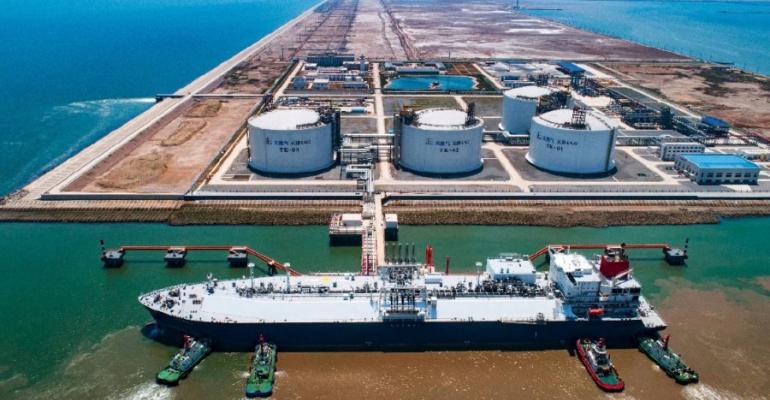In 2018, China’s imports of LNG soared 40.4% year-on-year and recorded 53.8m tonnes, according to figures released by the General Administration of Customs. Japan, the world's largest importer of LNG saw a 1% drop last year to 82.9m tonnes.
Based on the statistics from Banchero Costa Research, China retained its position as the world’s second largest importer of the commodity after Japan, having overtaken South Korea in 2017.
China’s LNG imports in the first five months of this year up 20.4% year-on-year and record 23.9m tonnes.
Looking ahead according to China’s 13th Five-Year Plan, the consumption rate of LNG as the primary energy in China will keep increasing and reach 8.3-10% by 2020, compared to around 6.6% at present. China estimates that it will import 68.43m tonnes LNG in 2019 and 75m tonnes LNG in 2020.
New LNG receiving terminals
To cater to soaring imports as of the end of 2018, China had constructed 19 LNG receiving stations across the country and more facilities are being developed to support the increasing demands.
At the beginning of this year, North Chinese port operator Yantai Port Group has signed agreements with two subsidiaries of PetroChina to jointly build the LNG receiving station at west port area of Yantai Port.
In May, China’s private energy company, Guanghui Energy, announced plans to construct an LNG receiving station at Xueyan port on the Yangtze river, which will be capable of providing an LNG refuelling service and LNG resources and support its LNG receiving station in Nantong, Jiangsu province.
Lanqiao Port (Landbridge port) also inked strategic co-operation agreement with Beijing Energy Holding in July to construct the LNG receiving station. The terminal will have a loading and discharging capacity of 5m tons annually.
Read more: Lanqiao port and Beijing Energy to jointly develop LNG receiving terminal
Guo Zonghua, president of Shaanxi Gas Design Institute said that LNG receiving station and plant will be the main source for the increasing LNG supply volume in China. Guo estimates that China is likely to have 68 LNG receiving stations by 2023.
Growing LNG shipping fleet
On the shipping front China has currently three major LNG carrier operators, comprising the LNG arms of Cosco Shipping, China Merchants and China National Offshore Oil Corporation (CNOOC) to develop their own LNG carrier fleet for LNG transportation.
China Merchants Energy Shipping currently owns 12 LNG carriers according to fleet updates released in the company's official website. Cosco Shipping Energy Transportation has partially funded 38 LNG carriers, including 26 of which are under operation and are under construction as the end of 2018. CNOOC Energy Development a subsidiary of China leading LNG importer and producer CNOOC, is also seeking to expand its business in operating LNG carriers.

